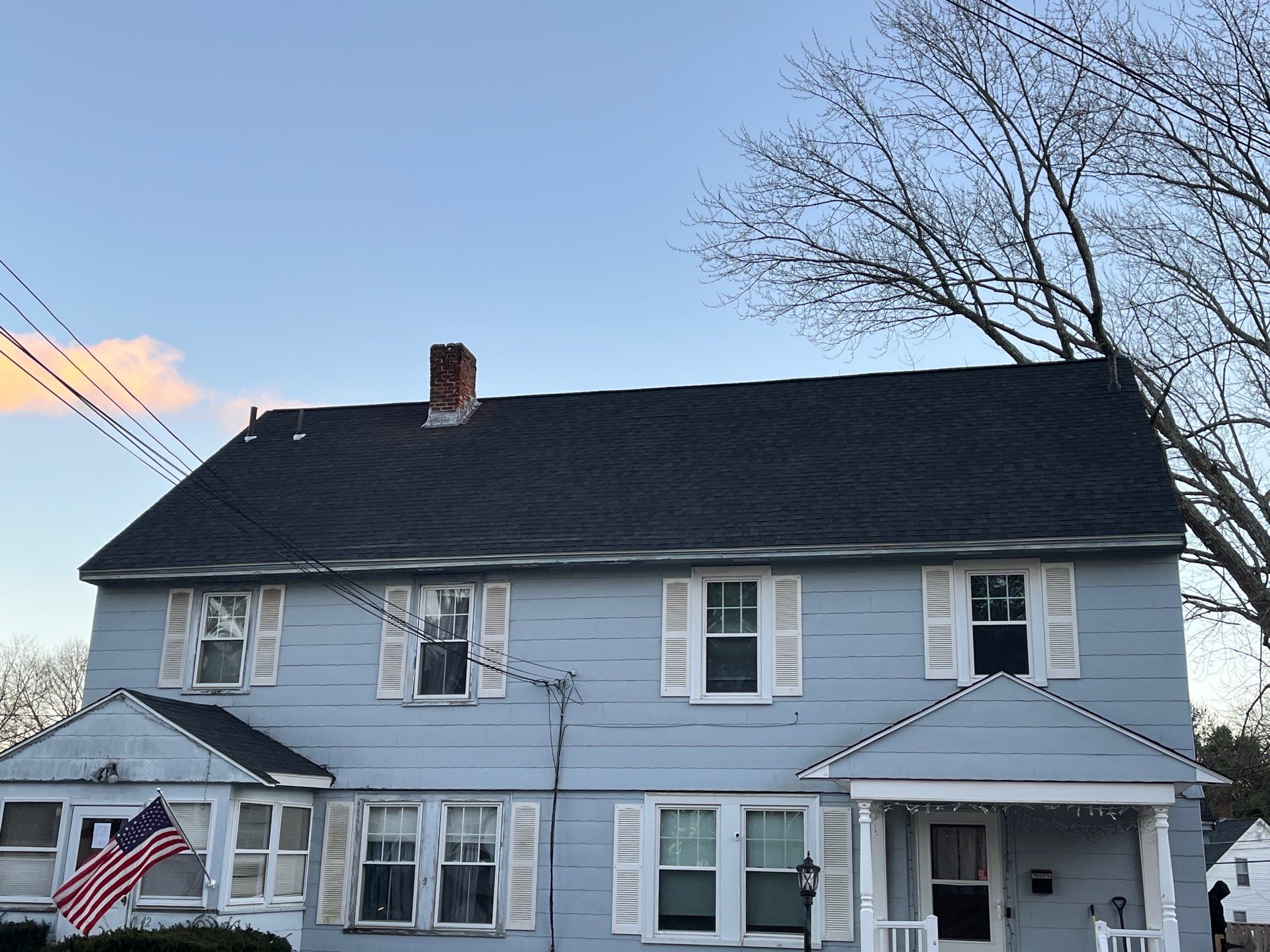
Winter Roofing: Can It Be Done? | Cold Weather Tips
When unexpected roof damage strikes in the colder months, or a planned replacement extends into winter, homeowners often wonder: "Can roofing even be done when it's cold outside?" The answer from Masterpiece Roofing is a resounding yes, in many cases, roofing can be done in winter, but it comes with specific challenges and considerations. While spring and fall are typically ideal for roof projects, professional roofers are equipped to handle winter installations when necessary, balancing urgency with quality and safety.
Challenges of winter roof work
Winter weather presents unique obstacles that make roofing more complex and demanding than in milder seasons:
Cold Temperatures:
Material Brittleness: Many roofing materials, especially asphalt shingles and underlayments, become more rigid and brittle in freezing temperatures. This makes them prone to cracking, breaking, or tearing during handling and installation.
Adhesive Performance: Sealants, caulks, and self-adhering membranes rely on temperature for proper curing and bonding. In cold weather, these materials may take much longer to set, or they may not achieve full adhesion, compromising the roof's watertight seal.
Worker Comfort & Efficiency: Extreme cold can reduce worker dexterity and endurance, potentially slowing down the project.
Snow and Ice:
Safety Hazards: Snow and ice create incredibly slick surfaces, drastically increasing the risk of slips and falls for roofing crews. This is the paramount concern.
Concealed Damage: Snow cover can hide existing damage or imperfections on the roof deck, making thorough preparation difficult.
Moisture Intrusion: Melting snow and ice during installation can introduce unwanted moisture to the roof deck or underlying materials, potentially leading to future issues if not managed meticulously.
Shorter Daylight Hours: Less daylight means shorter working windows, which can extend the overall project duration.
Stronger Winds: Winter often brings higher winds, which can be hazardous for workers and can damage newly installed materials before they are fully secured.
Property Damage Risk: Increased potential for damage to landscaping or property from falling ice, snow, or brittle materials during tear-off and installation.
Roofing materials that work best in cold weather
While all materials face challenges in extreme cold, some are more forgiving than others:
Metal Roofing:
Best Performer: Metal roofing is highly tolerant of cold temperatures. Its flexibility and integrity are largely unaffected by freezing conditions.
Installation: Metal panels can be safely cut and installed without becoming brittle. Fasteners and seams, while still requiring careful attention, are less temperature-sensitive than adhesive-based systems.
Advantages: Excellent choice for winter installations due to its inherent cold-weather resilience.
EPDM (Rubber Roofing):
Good Performer: EPDM is designed to remain flexible in very low temperatures, preventing cracking or brittleness during handling.
Adhesive Concerns: While the membrane itself is cold-tolerant, the adhesives used for fully adhered EPDM systems can be affected by cold, requiring specific low-temperature formulations or longer flash-off times. Mechanically fastened EPDM is less sensitive to temperature.
Slate and Tile:
Fragile in Cold: While durable, individual slate and tile pieces can be brittle and prone to breaking during handling in freezing temperatures. Extreme care is required.
Mortar Issues: Mortar-bedded tiles require specific temperatures for proper curing, making installation challenging in consistently freezing conditions without specialized additives or heated enclosures.
Asphalt Shingles:
Most Challenging: Asphalt shingles are the most sensitive to cold. Below 40-45°F, their self-sealing adhesive strips may not activate properly, relying solely on fasteners to hold them down. They can also crack and break easily when flexed or walked on in freezing conditions.
Professional Techniques: Professional roofers use techniques like hand-sealing or specialized adhesives to ensure proper bonding in cold weather. They also handle shingles with extreme care to prevent breakage.
How professionals adapt to winter installs
Professional roofing companies like Masterpiece Roofing employ specific strategies to ensure quality and safety during winter projects:
Constant Monitoring of Weather Conditions: Daily monitoring of temperature, wind chill, precipitation, and wind speeds. Work will be rescheduled or paused if conditions are unsafe or detrimental to material performance.
Material Handling: Storing materials in a warm, dry place until just before installation to keep them pliable. Carrying smaller bundles of shingles to minimize flexing.
Specialized Adhesives and Sealants: Using low-temperature formulations of caulks, sealants, and self-adhering membranes designed to perform in colder weather.
Temporary Sealing: Implementing temporary roof coverings and effective waterproofing solutions at the end of each workday to protect the exposed roof deck from overnight snow or rain.
Heated Storage/Tents: For sensitive materials or specific processes (e.g., certain adhesives), temporary heated enclosures might be used.
Enhanced Safety Protocols: Implementing stricter fall protection measures, using ice melt or sand on ladders and pathways, and ensuring crews are properly dressed and equipped for cold conditions.
Careful Cleanup: Meticulously clearing snow and ice from the work area and thoroughly cleaning up debris from surrounding areas, being mindful of potential hidden nails under snow.
Phased Installation: For very large or complex projects, the work might be broken down into smaller, more manageable sections.
Is it safe and cost-effective?
The safety and cost-effectiveness of winter roofing depend heavily on the circumstances and the professionalism of the contractor.
Safety:
Risk vs. Urgency: If your roof is leaking and causing interior damage, the immediate safety of your home might outweigh the increased risks of winter work.
Professional Difference: A reputable roofing contractor like Masterpiece Roofing prioritizes safety above all else. They have the training, equipment, and protocols to mitigate risks, making winter roofing significantly safer than a DIY attempt. Attempting a DIY roof repair in winter is highly dangerous.
Cost-Effectiveness:
Potential Savings (Sometimes): In some markets, contractors may have a lighter workload in winter, potentially offering slightly better pricing on labor. However, this is not always the case.
Increased Costs (Often): The challenges of winter work can lead to increased costs due to:
Slower installation times (more labor hours).
Increased material waste due to brittleness.
Need for specialized cold-weather materials or temporary heating.
Costs associated with snow/ice removal from the roof.
Damage Control: If winter roofing prevents further interior damage from a leaking roof, the cost is absolutely justified, as it prevents more expensive repairs down the line.
In summary, for urgent situations, winter roofing can be both safe and cost-effective if performed by qualified professionals. For non-urgent projects, weighing the pros and cons is important.
When it’s best to wait until spring
While professional winter roofing is possible, there are situations where postponing the project until warmer, drier weather is the most sensible option:
Non-Urgent Projects: If your roof is not actively leaking or severely compromised, and you can safely wait, holding off until spring (or fall) allows for ideal material performance and generally smoother, faster installation.
Extremely Harsh Conditions: During periods of persistent heavy snow, prolonged deep freezes, or severe ice storms, roofing work should generally be paused or avoided altogether. Safety becomes too compromised.
Budget Constraints: If the potential for increased winter labor or material costs is a concern, waiting for more favorable conditions might be more budget-friendly.
Material Sensitivity: If your preferred roofing material is particularly sensitive to cold (like certain types of adhesive-backed shingles or specialized coatings), waiting for warmer temperatures ensures optimal curing and long-term performance.
Cosmetic Projects: For purely aesthetic roof projects where there's no immediate danger, waiting for prime roofing season makes sense.
Masterpiece Roofing provides honest assessments of your roof's condition and the feasibility of a winter installation. We will always prioritize your home's safety and the long-term integrity of your roof, advising you on the best course of action. If a winter installation is necessary, you can trust our expertise to execute the project safely and effectively.
Facing a winter roof repair or replacement? Don't wait for spring to wonder. Contact Masterpiece Roofing today for a professional assessment and expert advice!
Office: 1248 Highland St, Holliston, 01746 MA
(508) 882-6080
Email: office@buttonmasterpieceroof.com
Site: www.masterpieceroof.com
Assistance Hours
Mon – Fri 8:00am – 4:00pm

